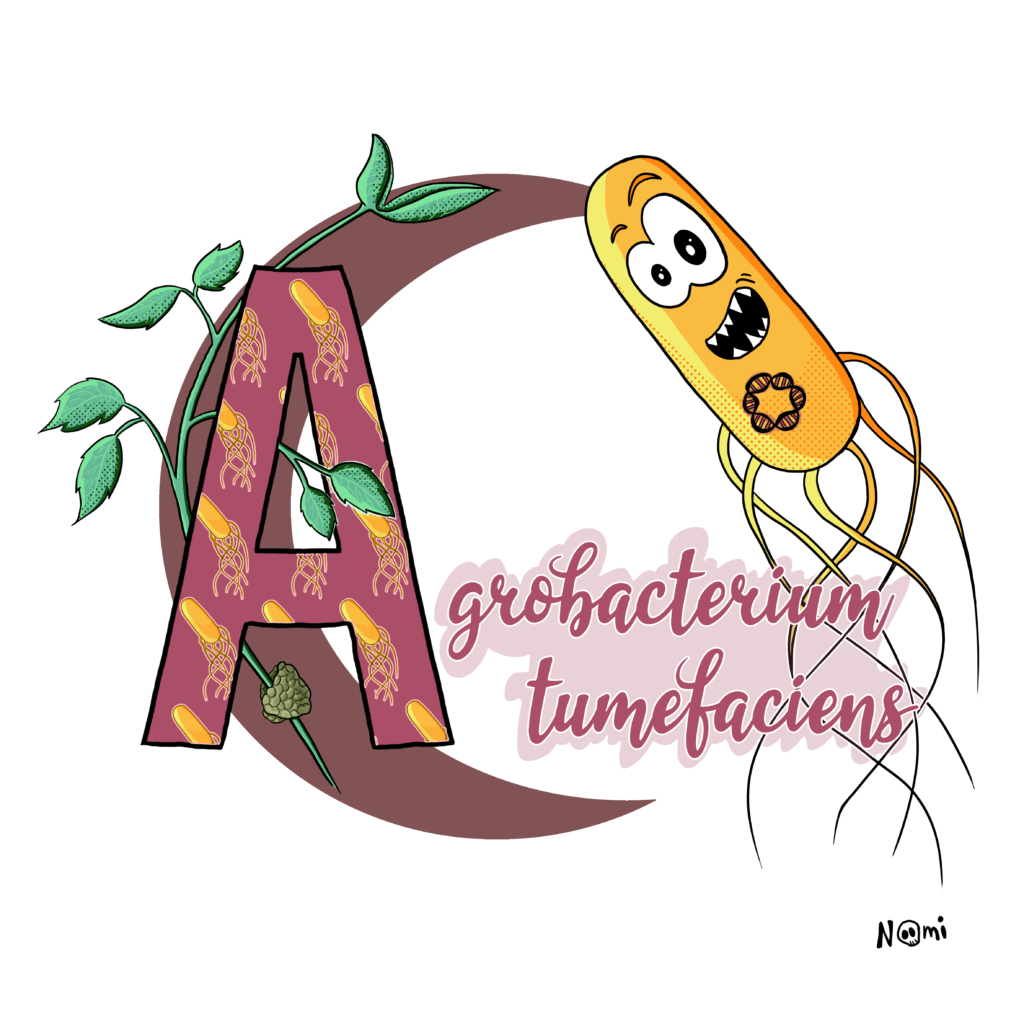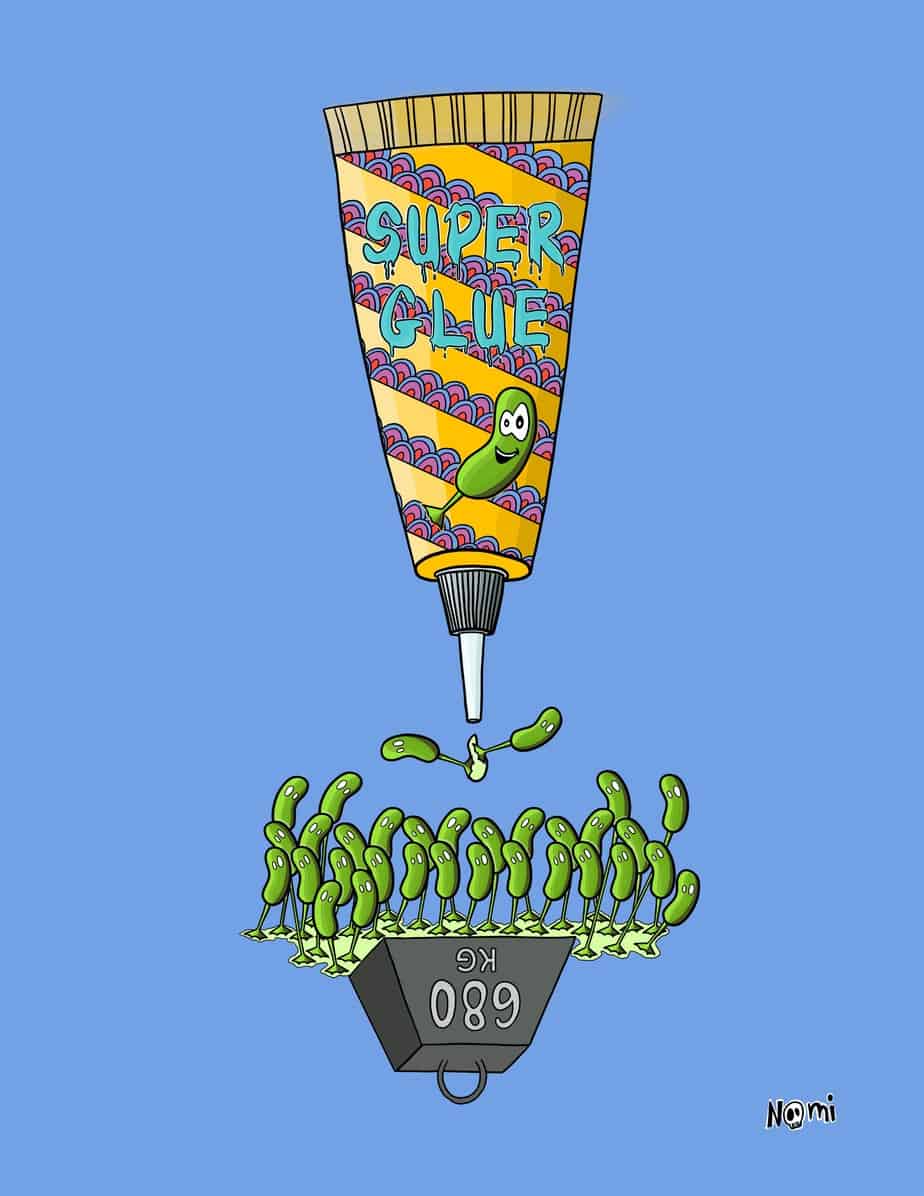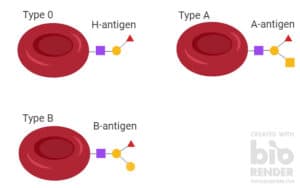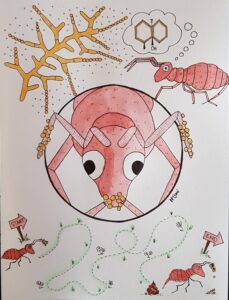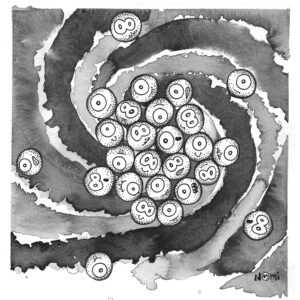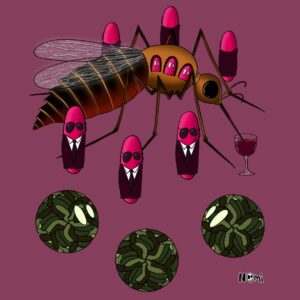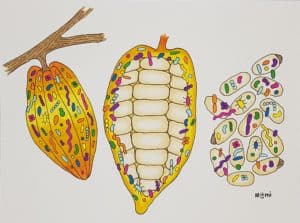About the soil bacterium Agrobacterium tumefaciens and its dual lives
At the heart of this bacterium-plant relationship lies the soil bacterium Agrobacterium tumefaciens. Agrobacterium lives in the rhizosphere, the region in the soil close to plant roots. This area is full of secreted molecules from the plant as well as plenty of other soil microorganisms.
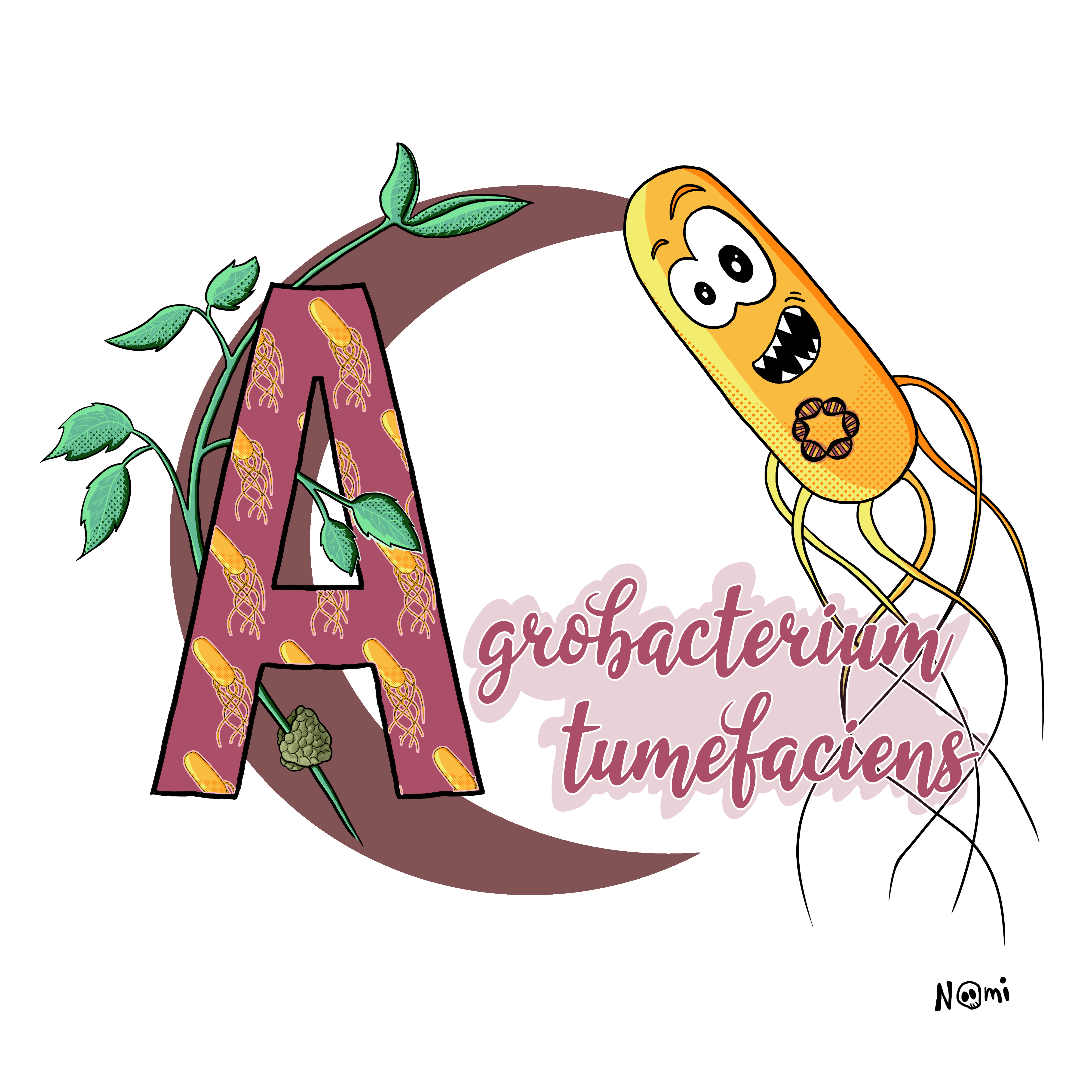
Agrobacterium tumefaciens is a versatile bacterium with two distinct lifestyles. In its free-living state, it happily lives and grows in the soil.
However, the bacterium also responds to some plant molecules, like sugars and acids, through its sensors on the surface. These molecules are often a sign of a wound within the plant root.
Once Agrobacterium tumefaciens detects such a molecule, it activates its virulence and makes it move toward the plant. The otherwise harmless bacterium is now a pathogen and can sneak into the plant where it goes on a big mission.
But just like animals, plants have defence mechanisms against bacterial pathogens as they recognise their bacterial surface. Depending on the plant’s immune system, the plant can be resistant or susceptible to the incoming intruder.
Luckily, Agrobacterium tumefaciens has the right weapons to counterattack, which is why it can infect many different plants.
Agrobacterium transfers its DNA into plants
Agrobacterium’s remarkable capability lies in its unique ability to transfer its own DNA into plant cells. For this, the bacterium has a special exporting machine sitting in its outer envelope.
Through this machinery, the bacterium sends some of its DNA. But not just any part. Agrobacterium tumefaciens has a special DNA portion in the form of a circle for this process. And on this so-called T-plasmid are only genes that help the bacterium during the plant-infection process.
When arriving in the plant cell, the T-plasmid is coated with specific bacterial proteins. These help the plasmid find its way to the nucleus of the plant cell.
Once landed in the nucleus, some of the plant’s systems are hijacked to destroy the proteins around the bacterial plasmid. This sets the plasmid free and it can now interact with the DNA of the plant cell.
Since the bacterial DNA-plasmid contains similar sequences as the plant DNA, these overlap so that the bacteria-DNA can integrate into the plant-DNA. Now, the bacteria-DNA is part of the plant-DNA and the plant activates the bacterial genes just as they were its own.
Transformed plants grow tumours as bacterial houses
Some of these activated bacterial genes cause the plant to produce certain plant hormones at very high levels. This hormonal imbalance triggers the cells to divide rapidly without control. The plant grows plant tumours, or so-called galls. You have probably seen them on the stems of plants or trees.
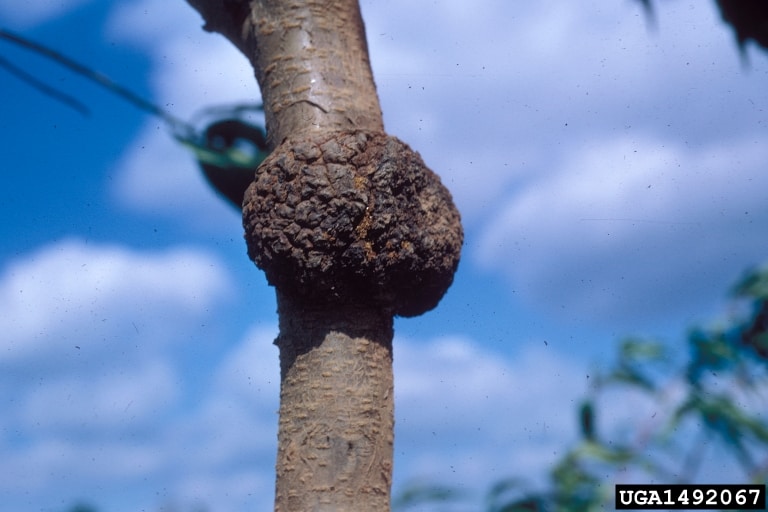
But Agrobacterium tumefaciens doesn’t merely cause tumours. Some of its genes – now present within the plant DNA – become factories to produce opines. Opines are an exclusive food source for the bacterium, allowing it to grow and thrive within its newly established plant-tumour home.
With Agrobacterium tumefaciens from microbiology to biotechnology
Once Agrobacterium tumefaciens’ superpower to transfer DNA into plant cells was discovered and understood, researchers used it extensively in the biotechnology field. They learned to introduce random pieces of DNA into plants, uncovering plant physiology and paving the way for genetically modified organisms.
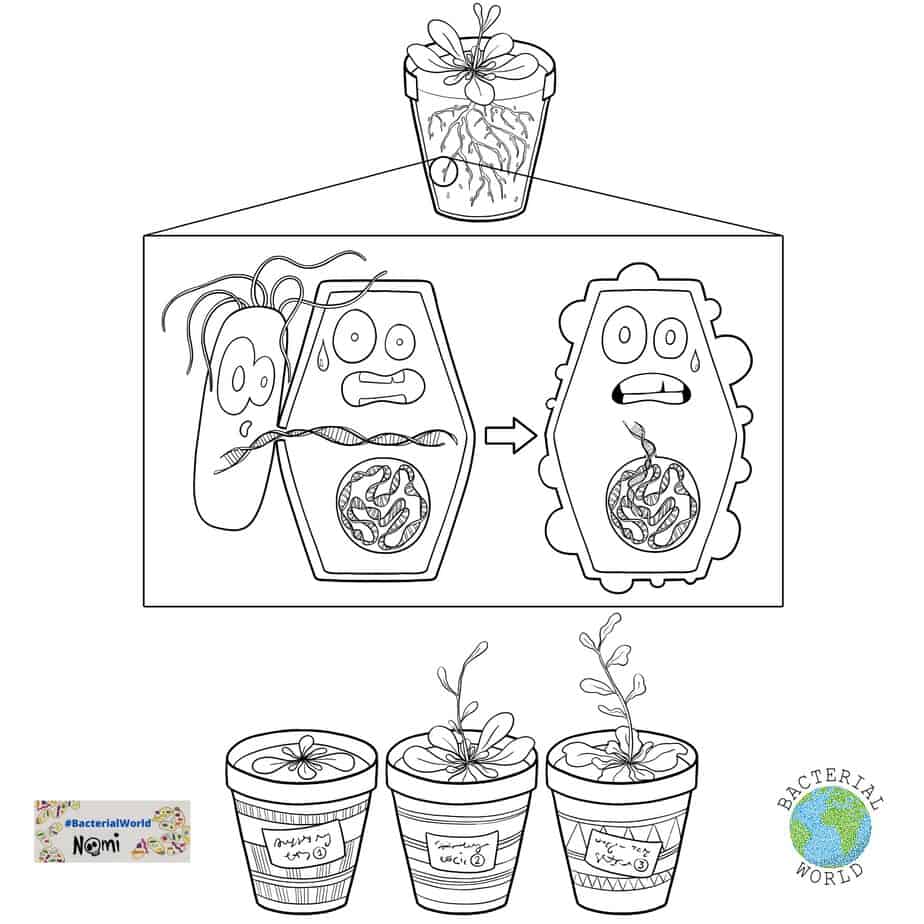
By engineering specific DNA segments in the bacterium, researchers can transfer desirable traits and functions into plants. This technique, known as plant transformation, has enabled the development of genetically modified plants that resist pests, withstand harsh conditions or produce pharmaceutical proteins and vaccines.
A bacterium helps us unravel plant physiology
As we’ve seen so often in the microbial world, the smallest actors often have the grandest roles. Agrobacterium tumefaciens, a humble soil bacterium, is a true superhero when it comes to plant interactions.
Its ability to infect plants, exchange signals and transform its own genetic material has offered us valuable insights into the fascinating partnership between bacteria and plants. From the soil to the laboratory, Agrobacterium tumefaciens is at the forefront of illuminating the mysteries of nature and guiding us toward a deeper understanding of both the botanical and microbial worlds.

